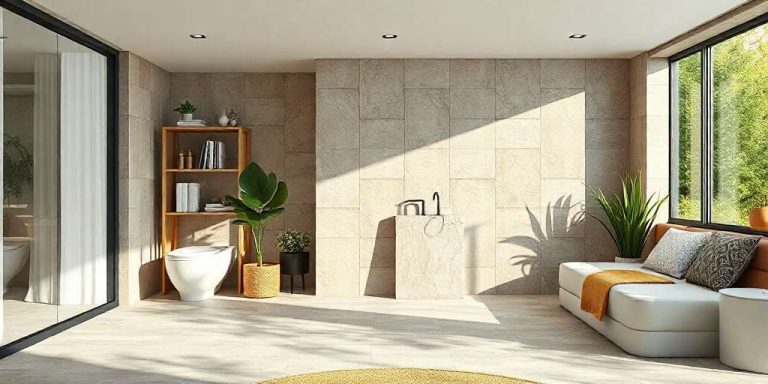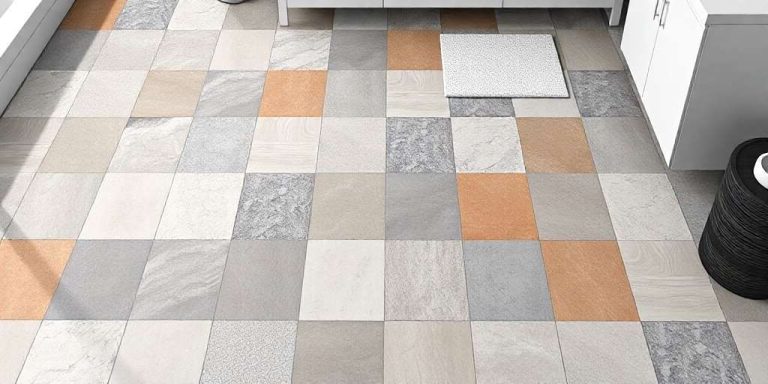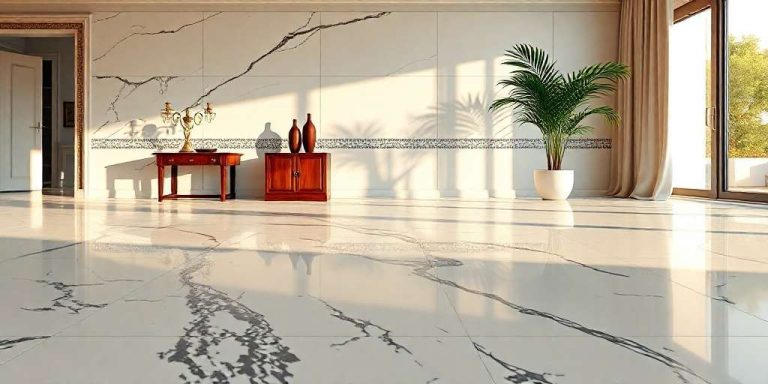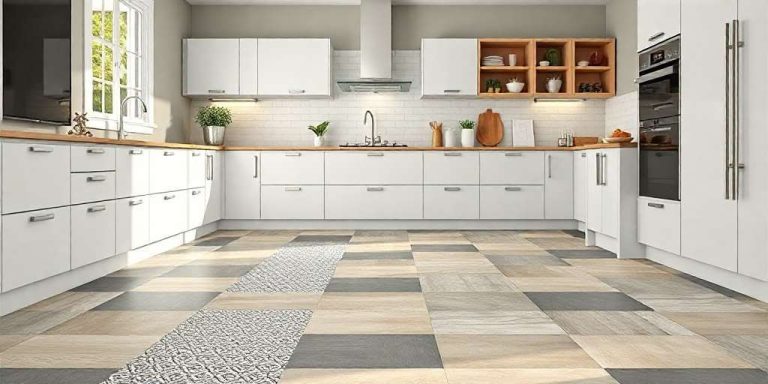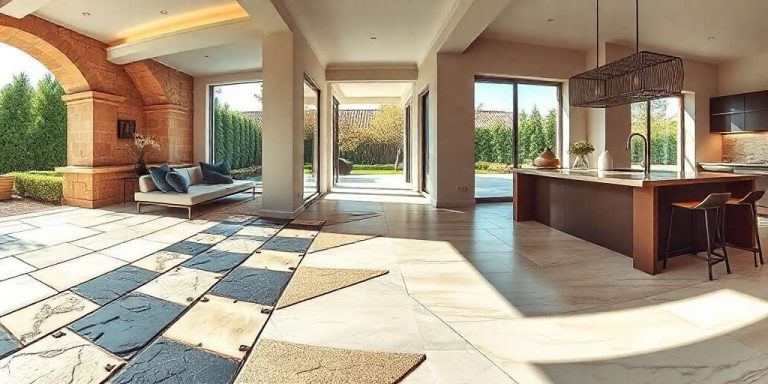Porcelain Tail: A Comprehensive Guide to Its History and Uses
Porcelain tail refers to a high-quality type of porcelain used primarily in tile production. Its unique properties make it suitable for various applications in home design, including flooring and wall coverings. The history of porcelain tail is rich, with influences from both Asian and European traditions. Understanding its production process and types is essential for various design projects, offering both durability and aesthetic appeal.
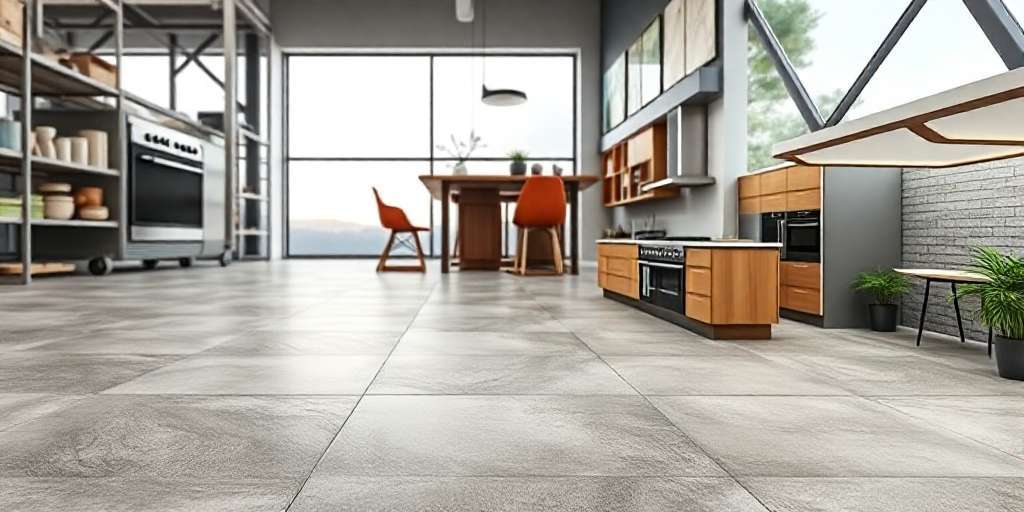
Understanding Porcelain Tail: Origins and Evolution
The journey of porcelain tail unfolds through a rich tapestry of history, showcasing developments that have shaped its significance in contemporary design and architecture. The evolution from primitive materials to refined porcelain reveals a fascinating story of craftsmanship and innovation.
Early Developments in Porcelain Materials
The origins of porcelain can be traced back to ancient China, where skilled artisans experimented with various clays and firing techniques. This exploration laid the groundwork for the first high-fired porcelain, which emerged during the Tang Dynasty (618-907 AD). Its unique properties of translucence and strength quickly garnered attention, becoming a symbol of luxury and sophistication.
Influence of Asian and European Traditions
As trade routes expanded, the techniques and aesthetics of porcelain began to influence cultures beyond Asia. European ceramics initially imitated Chinese porcelain, leading to innovations like soft-paste porcelain in the 18th century. This blend of Asian and European traditions created a diverse array of styles and forms, reflecting varying cultural values and artistic sensibilities.
Transition from Artisanal to Industrial Production
With the Industrial Revolution in the 19th century, porcelain production underwent a dramatic transformation. The advent of mass manufacturing techniques allowed for the widespread availability of porcelain tiles. Factories implemented machinery that standardized processes, enabling consistency in quality while reducing production costs. This shift democratized access to premium materials, making porcelain tail a viable option for broader applications in architecture and home décor.
Production Process of Porcelain Tail Tiles
The production of porcelain tail tiles involves a meticulous and innovative process that ensures high quality and durability. This process encompasses several key stages, from material selection to finishing touches.
Selection of Premium Materials and Clay Mixtures
The foundation of excellent porcelain tiles starts with the selection of high-quality materials. Premium clays, feldspar, and quartz are commonly utilized to create a dense and durable mixture. This combination enhances the physical properties of the tiles, contributing to their strength and resistance to wear.
Advanced Manufacturing Techniques
Manufacturing porcelain tiles involves sophisticated techniques aimed at achieving superior results.
Pressing and Drying Methods
The initial shaping of tiles is accomplished through hydraulic pressing. This method allows for precise forms and uniform thickness. Following this, tiles undergo a controlled drying process to eliminate moisture, which is crucial for preventing defects during firing.
High-Temperature Firing and Vitrification
For enhanced strength, tiles are subjected to high-temperature firing in specialized kilns, typically between 1,200°C and 1,400°C. This process leads to vitrification, where the clay particles are fused together. The result is an impermeable final product that is resistant to stains and moisture.
Decorative Finishes and Surface Treatments
The aesthetic appeal of porcelain tail tiles is largely attributed to their decorative finishes and surface treatments. Various techniques are employed to achieve the desired look.
Glazed vs. Unglazed Surfaces
Glazed tiles feature a layer of glass that adds color and a reflective quality. In contrast, unglazed tiles maintain a more natural appearance and often exhibit greater slip resistance, making them suitable for different applications.
Polishing and Texture Options
Surface polishing enhances the visual appeal and smoothness of the tiles, while textured options provide additional grip. The choice between these finishes can impact both the design and functionality of the tiles in various settings.
Types and Classifications of Porcelain Tail Tiles
Porcelain tail tiles come in various types and classifications, suitable for different uses and aesthetics. Their versatility makes them a favored choice in contemporary design.
Floor Tiles and Large Format Porcelain Slabs
These tiles are recognized for their strength and visual impact. Large format slabs can create a seamless look, enhancing the sense of space in any area.
Wood Effect and Stone Effect Tiles
Wood effect tiles are designed to mimic the appearance of natural wood while providing the durability of porcelain. These options are ideal for creating warm, inviting environments. Stone effect tiles replicate the aesthetic of natural stone, offering robust options that can withstand heavy foot traffic, making them perfect for both residential and commercial spaces.
Marble Effect and Onyx Effect Variants
Marble effect tiles bring elegance and luxury indoors without the maintenance associated with real marble. They are available in various colors and veining patterns. Onyx effect tiles, with their striking translucency and color variations, add a unique touch, capturing the essence of natural onyx.
Wall Tiles for Bathrooms and Kitchens
Wall tiles made from porcelain offer both style and practicality. Ideal for wet areas, these tiles provide ease of cleaning and resistance to moisture.
White Tiles and Patterned Tiles
Classic white tiles continue to be a popular choice due to their timeless appeal. They can brighten spaces and create a feeling of openness. Patterned tiles, on the other hand, introduce individuality and character, making them perfect for accent walls and creative designs.
Victorian and Moroccan Style Inspirations
Victorian tiles often feature intricate designs and rich colors, perfect for those looking to create a vintage atmosphere. Moroccan style tiles showcase vibrant patterns and textures, bringing exotic influences into home decor.
Outdoor Porcelain Tiles and Concrete Alternatives
Porcelain tiles designed for outdoor use are engineered to withstand the elements while enhancing outdoor spaces.
Frost-Resistant Outdoor Tiles
These tiles are specifically manufactured to withstand freeze-thaw cycles, making them suitable for different climates without compromising on durability or aesthetics.
Non-Slip and Antideslizantes Finishes
Safety is a priority in outdoor applications. Non-slip finishes provide traction, reducing the risk of slips and falls in wet conditions, ensuring that outdoor areas remain safe for all users.
Premium Uses and Applications in Home Design
The versatility of porcelain tail tiles makes them an ideal choice for a range of applications, enhancing both the aesthetic and functionality of various spaces within a home.
Bathrooms: Combining Luxury and Functionality
In bathroom design, porcelain tail tiles prove to be an exceptional element that beautifully merges style with practicality. Their resistance to moisture and easy maintenance make them the go-to choice for this environment.
Bathroom Tiles for Showers and Walls
Utilizing these tiles for showers and walls creates a luxurious atmosphere. The variety of colors and patterns available can complement any design theme, from classic to contemporary. Their durability ensures that they withstand the test of time, maintaining their appearance even in high-humidity areas.
Accessory Integration and Wall Tile Floor Solutions
Incorporating porcelain tiles into accessory designs adds cohesion to the overall look. Many homeowners are opting for wall-to-floor transitions that utilize the same tile type for a seamless effect. This approach not only enhances design continuity but also simplifies cleaning and maintenance.
Kitchens: Durability Meets Aesthetic Appeal
In kitchens, the combination of style and durability is essential. Porcelain tail tiles offer a robust solution that is both functional and visually appealing.
Kitchens Tiles Options
Choosing the right tile options for kitchens can significantly elevate the space. From sleek surfaces to more textured finishes, the variety allows for personalization that meets both aesthetic desires and practical needs.
Kitchen Floors with Seamless Porcelain Slabs
Employing seamless porcelain slabs in kitchen flooring enhances the area’s elegance. These large-format tiles reduce grout lines, offering a cleaner and more expansive look, perfect for modern kitchen designs.
Outdoor Spaces: Patios, Terraces, and More
Porcelain tail tiles are increasingly favored for outdoor applications. Their resilience against weather elements makes them suitable for various exterior designs.
Outdoor Tiles for Luxury Vinyl Alternatives
Using porcelain tiles outdoors can mimic the look of luxury vinyl while providing superior durability. Their ability to resist fading and physical wear makes them ideal for patios and terraces.
Concrete Tiles and Sealing Techniques
In areas where concrete tiles are used, proper sealing techniques ensure longevity and maintain appearance. This helps to create a safe outdoor area that withstands the elements while preserving its beauty.
Maintenance, Sealing, and Longevity of Porcelain Tail Products
Proper maintenance and sealing are essential to ensure the longevity of porcelain tail products. Consistent care can enhance their performance and appearance over time.
Cleaning Best Practices for Porcelain Tiles
Regular cleaning is crucial for maintaining the pristine look of porcelain tiles. It not only removes dirt and grime but also prevents long-term damage to the surface.
Recommended Cleaning Kits and Products
- Use pH-balanced cleansers specifically designed for porcelain.
- Soft microfiber mops are effective for routine cleaning.
- For deeper cleaning, a steam cleaner can be utilized on high-traffic areas.
Avoiding Damage to Sealed Surfaces
Being careful with cleaning products is vital. Harsh chemicals can damage the sealant and the tile surface. Always test any new product on a small area first.
Sealing Options for Enhanced Durability
Sealing porcelain tiles can prevent water infiltration and staining, extending their lifespan significantly. Different sealants offer varying benefits based on the installation location and expected foot traffic.
Types of Sealants for Floor Tiles and Walls
- Penetrating sealers, which absorb into the tile and provide a natural look.
- Enhancing sealers, which add depth to the color of the tile while providing protection.
- Topical sealers, designed for easy application and offering a glossy finish.
Benefits of Regular Sealing in High-Traffic Areas
In areas with heavy foot traffic, frequent sealing helps maintain the integrity of the tiles and prevents premature wear. Regular applications protect against scratches, stains, and moisture accumulation, ensuring that porcelain tiles remain both functional and beautiful.
Selecting the Right Porcelain Tail Tiles for Your Project
Choosing the ideal porcelain tail tiles for a project involves careful consideration of style, quality, and logistics. The right selection can elevate the overall aesthetic and functionality of a space.
Matching Tiles to Home Styles and Interior Themes
Harmonizing tile selections with existing home styles enhances the visual appeal of interior spaces. Different tile designs can create a distinct atmosphere.
Combining Marble Tiles with Wood Effect Tiles
- Combining the luxurious appearance of marble tiles with the warmth of wood effect tiles offers a sophisticated balance, suitable for both modern and traditional decor.
- These combinations can transform areas, creating seamless transitions between spaces like kitchens and dining areas.
Using Patterned Tiles for Unique Visual Impact
- Incorporating patterned tiles introduces diversity to interiors and can act as focal points in any room.
- These tiles are particularly effective in bathrooms and kitchens, where unique designs can reflect personal styles or themes.
Evaluating Quality and Authenticity
Quality assessment is crucial for ensuring long-lasting performance. Identifying genuine materials helps avoid misleading products.
Identifying Premium Porcelain Materials
- Genuine porcelain tail tiles showcase exceptional durability and low porosity, making them suitable for various settings.
- Look for certifications and product specifications that indicate high-quality production standards.
Spotting Imitation vs. Genuine Porcelain Tiles
- Imitations often have a higher absorption rate and can wear out more quickly under frequent use.
- Visual inspection for authenticity includes checking the clarity of colors and patterns, as well as weight and texture.
Ordering, Shipping, and Export Considerations
Effective logistics are essential in tile procurement, especially for larger projects. This ensures timely delivery and proper handling.
Working with Trusted Tiles Shops and Services
- Collaboration with reputable suppliers guarantees access to quality products and reliable customer service, crucial for successful installations.
- Checking reviews and seeking recommendations can help identify trustworthy vendors.
Managing Large Format Slabs Handling and Delivery
- Large format porcelain slabs require specialized handling during transportation to prevent damage.
- It’s important to discuss logistics with suppliers to ensure proper loading and delivery methods that maintain product integrity.
Innovations and Trends in Porcelain Tail Tile Industry
The porcelain tile industry is experiencing remarkable transformations driven by technological advancements and evolving consumer preferences. These innovations not only enhance product performance but also promote sustainability and design versatility.
Emerging Technologies in Tile Manufacturing
Recent advancements are redefining how porcelain tiles are produced, emphasizing both functionality and aesthetics.
Antimicrobial Surfaces and Advanced Sealers
One of the most significant innovations in porcelain tiles is the development of antimicrobial surfaces. These specialized coatings inhibit the growth of bacteria, making tiles safer for indoor environments, especially in high-traffic areas. Alongside this, advanced sealers are being formulated to provide longer-lasting protection against stains and moisture, enhancing the durability of the tiles.
Eco-Friendly and Sustainable Production Processes
The industry is increasingly prioritizing sustainability. Manufacture processes are being refined to minimize waste, reduce energy consumption, and use recycled materials whenever possible. This trend aligns with growing consumer awareness about environmental impact, leading manufacturers to adopt eco-friendly practices that provide high-quality products while contributing to planetary health.
Luxury Vinyl and Hybrid Materials Integration
The blending of porcelain with luxury vinyl and other materials is gaining traction. This integration offers a unique solution that combines the robustness of porcelain with the warmth and comfort of vinyl.
Combining Porcelain with Other Premium Flooring Solutions
The fusion of porcelain with other flooring types allows for innovative design options and improved performance. For instance, designs that mimic natural wood or stone can now showcase the durability and stain resistance typical of porcelain, appealing to a broader audience.
Trends in Outdoor and Indoor Floor Design
Recent design trends reflect a shift towards creating seamless transitions between indoor and outdoor spaces. Porcelain tiles designed for outdoor use are being engineered to withstand extreme weather conditions while maintaining aesthetic appeal. Textured surfaces and slip-resistant finishes enhance safety, making outdoor living areas more functional and enjoyable.
Common Questions About Porcelain Tail Tiles
Understanding the common questions related to porcelain tail tiles can aid in making informed decisions for home projects. Here are some frequently discussed topics regarding installation, cost, safety features, and more.
Installation Tips and Adhesive Recommendations
Proper installation is crucial for maximizing the benefits of porcelain tail tiles. To achieve a flawless finish, specific tools and materials are necessary.
Tools Needed for Cutting and Handling
- Ceramic tile cutter: Essential for precise cutting of porcelain tiles.
- Wet saw: Ideal for larger jobs and provides smooth cuts.
- Notched trowel: Used to apply adhesive evenly on the substrate.
- Level: Ensures that tiles are laid evenly across the installation surface.
Backer Boards and Adhesive Options
Selecting the right backer board and adhesive is fundamental. Cement backer board offers moisture resistance, making it suitable for wet areas like bathrooms. A modified thin-set adhesive is often recommended for porcelain tiles, ensuring strong bonding due to their dense structure.
Addressing Cost and Long-Term Value
The initial cost of porcelain tail tiles can be higher than other materials, but the long-term value tends to offset this investment through durability and low maintenance costs.
Comparing Porcelain Tiles to Ceramic and Stone
- While ceramic tiles are generally more affordable, they lack the durability and water resistance of porcelain.
- Natural stone may offer unique aesthetics but often requires more maintenance and sealing compared to porcelain.
Understanding Pricing for Luxury Floor Materials
Pricing for porcelain tail products varies based on quality, brand, and design. Higher-quality tiles tend to be manufactured with advanced techniques that enhance appearance and longevity, justifying a premium price point.
Safety Features and Slip Resistance
Safety is a paramount consideration, especially in areas prone to moisture. Choosing the right tiles can prevent accidents.
Utilizing Antislip Coatings for Bathrooms and Outdoors
- Textured surfaces increase grip, making them suitable for wet environments like bathrooms.
- Antislip coatings can be applied to enhance usability in outdoor spaces, especially during wet conditions.
Regulations and Standards for Residential Flooring
Compliance with safety regulations and standards ensures that porcelain tiles meet specific criteria, particularly regarding slip resistance. Adhering to these guidelines can greatly enhance the safety of residential flooring.
Have a project in mind? Our team is ready to help with samples, specifications, and quotes.

